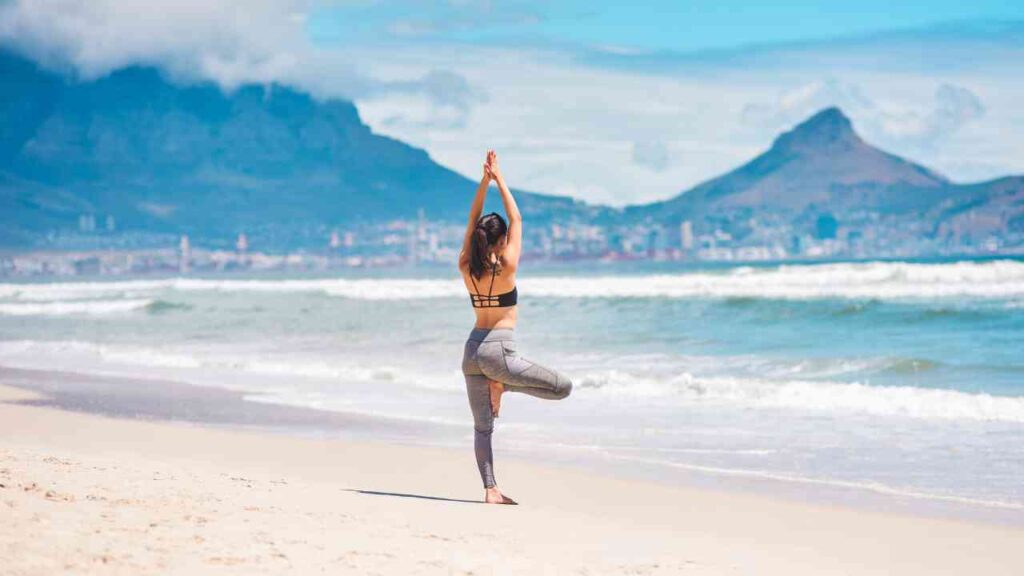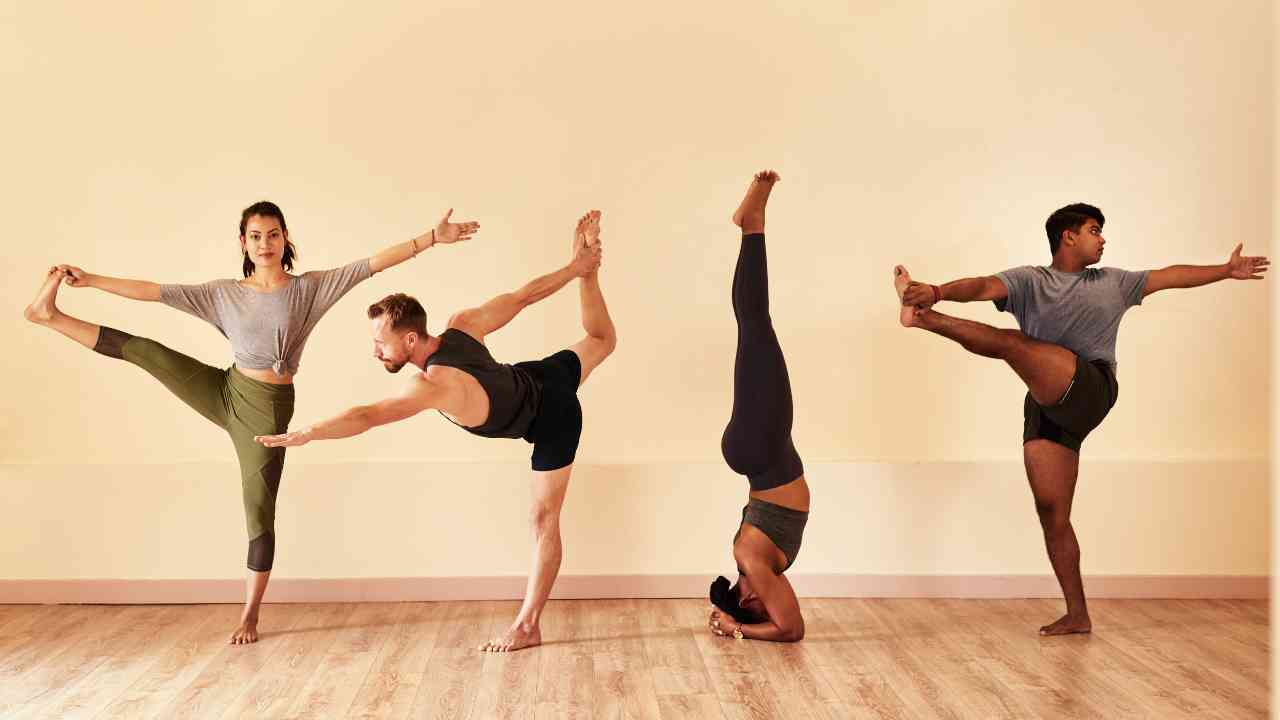Key Takeaways
- 10 mindfulness movements combine motion and focus for calmness and clarity.
- Reduce stress by lowering cortisol through gentle movements.
- Boost focus, resilience, and physical health with regular practice.
- Promote present-moment awareness with breathing, walking, and stretches.
- Quick and easy, needing just 10–15 minutes daily.
- Build mindfulness skills like patience and acceptance.
- Ideal for reducing stress and balancing mind and body.
Ready to Reclaim Your Peace and Focus?
Feeling overwhelmed and distracted has become a common struggle in today’s fast-paced world. Stress levels in the U.S. are at an all-time high, with studies showing that over 70% of adults experience regular stress and anxiety. But what if you could change that without relying on expensive tools or complicated programs? Imagine a simple yet transformative solution that blends movement and mindfulness, giving you back your clarity and calm.
Mindfulness isn’t limited to quiet meditation. It’s an approach that uses the body and mind together to achieve balance. When paired with gentle, purposeful movements, mindfulness can lower cortisol levels, reduce muscle tension, and help you feel grounded. Best of all, these techniques are easy to learn and can be practiced almost anywhere.
In this guide, we’ll introduce 10 mindfulness movements that are scientifically proven to reduce stress and boost focus. Whether you’re new to mindfulness or looking to deepen your practice, these movements are simple, accessible, and effective. Let’s explore how small, intentional steps can make a big difference in your mental and emotional well-being!
1. What Are Mindfulness Movements?
Mindfulness movements are simple, intentional physical activities that help you focus on your body, breath, and surroundings. Unlike intense workouts or traditional yoga, these movements are designed to gently engage your body while calming your mind. They emphasize slow, deliberate actions paired with deep breathing and mental awareness, making them an ideal tool for reducing stress and staying present.
Research shows that combining physical activity with mindfulness can lower stress hormones like cortisol by up to 20% and improve mental clarity. Many people find these exercises helpful for easing tension, improving posture, and boosting overall focus. The beauty of mindfulness movements is their flexibility—you don’t need any fancy equipment or hours of free time.
They can be done in as little as five minutes at home, in the office, or even outdoors. Mindfulness movements are also a great alternative for those who struggle with traditional seated meditation. By adding gentle motion, they make mindfulness accessible to anyone, regardless of fitness level or experience.
2. Benefits of Practicing Mindfulness Movements
Mindfulness movements are more than just gentle exercises—they’re a holistic approach to improving your mental, emotional, and physical well-being. Let’s explore these benefits in greater detail.
1. Improved Focus
Mindfulness movements train your mind to stay in the present moment. By focusing on each motion and your breathing, you can quiet mental chatter and sharpen your attention. Studies have shown that mindfulness exercises can enhance concentration and cognitive performance.
For example, a 2018 study published in Frontiers in Psychology found that participants practicing mindfulness-based movements experienced 30% fewer distractions and performed better in tasks requiring sustained focus.
By integrating mindfulness movements into your routine, you’ll find it easier to stay productive at work, focus on personal tasks, and remain attentive in your daily life.
2. Stress Reduction
Stress is one of the biggest challenges in today’s fast-paced world. Mindfulness movements work by activating your parasympathetic nervous system, which promotes relaxation and reduces stress. This system, often called the “rest and digest” response, helps lower cortisol levels and soothes your mind.
According to the American Psychological Association (APA), mindfulness practices can reduce stress-related symptoms by up to 38% when done consistently. Simple movements like stretching or mindful walking are excellent ways to signal your body to relax.
Table: Stress Reduction Statistics
| Cause of Stress | Impact | Mindfulness Effect |
| Workplace Pressure | Fatigue and distraction | Improved clarity and focus |
| Financial Concerns | Anxiety and poor sleep | Enhanced emotional resilience |
| Overstimulation (digital) | Difficulty unwinding | Reduced tension and overload |
3. Better Physical Health
Mindfulness movements aren’t just good for your mind—they benefit your body, too. Gentle, repetitive motions improve blood circulation, reduce muscle stiffness, and promote better posture. Over time, these small improvements can lead to greater flexibility and less chronic pain.
One practical benefit is their ability to energize you without exhausting your body. For instance, mindful stretching in the morning can reduce stiffness and set a positive tone for the day. Even a quick five-minute session at your desk can refresh your body after hours of sitting.
4. Emotional Resilience
Emotional resilience is your ability to handle life’s ups and downs without becoming overwhelmed. Practicing mindfulness movements fosters self-awareness, allowing you to observe your feelings without judgment. This can help you respond to challenges calmly and effectively.
Research from Harvard Medical School highlights that consistent mindfulness practice can increase emotional stability by 25% over eight weeks. You’ll find it easier to recognize stress triggers, pause before reacting, and maintain a sense of inner balance even during difficult times.
Table: Quick Summary of Benefits
| Category | Key Benefits |
| Mental | Improved focus, reduced distractions, better productivity |
| Emotional | Greater self-awareness, stronger emotional regulation |
| Physical | Enhanced circulation, reduced muscle tension, better posture |
| Stress Management | Lower cortisol, improved relaxation, reduced anxiety |
By practicing mindfulness movements, you’re not just improving one aspect of your life—you’re cultivating a well-rounded, healthier version of yourself. Whether it’s increased focus, better physical health, or emotional calm, these movements can transform your overall well-being.

The 10 Mindfulness Movements
These simple yet effective 10 mindfulness movements are perfect for improving focus and reducing stress. Each movement is designed to engage your body and mind, helping you feel calm and centered. Let’s explore them in detail.
1. Mindful Breathing with Arm Movements
This movement pairs deep breathing with gentle arm stretches, promoting relaxation and better oxygen flow to the brain. It’s an excellent way to start or end your day.
Steps to Practice:
- Sit or stand upright with your spine straight.
- Inhale deeply, slowly raising your arms overhead.
- Exhale as you lower your arms back to your sides.
- Repeat this for 5-10 breaths, focusing on the rhythm of your breath.
Benefits:
- Enhances focus by calming the nervous system.
- Relieves tension in the shoulders and neck, areas where stress often builds up.
Did You Know? Deep breathing alone can reduce cortisol levels by up to 25%, according to a study by the National Institutes of Health.
2. The Body Scan Stretch
The body scan stretch combines mindful awareness with gentle physical stretching. This practice helps you identify and release areas of tension in your body.
Steps to Practice:
- Stand or lie down comfortably.
- Starting from your feet, tense and then release each muscle group as you move upward.
- Breathe deeply and notice any areas of discomfort or tightness.
- Finish with a deep inhale and full-body stretch.
Benefits:
- Promotes body awareness, helping you recognize stress patterns.
- Eases physical tension for a more relaxed posture.
Pro Tip: Do this before bed to improve your sleep quality. A relaxed body sets the stage for a restful night.
3. Standing Forward Bend
Inspired by yoga, this movement stretches your back and encourages blood flow to the brain, enhancing mental clarity.
Steps to Practice:
- Stand tall with your feet shoulder-width apart.
- Exhale as you bend forward, letting your arms dangle naturally.
- Relax your neck and take deep breaths.
- Slowly roll back up to standing.
Benefits:
- Increases blood flow to the brain, improving focus.
- Relieves lower back tension caused by prolonged sitting.
Quick Fact: Increased blood flow to the brain can boost cognitive function by 15-20%, making this a great mid-day stretch.
4. Mindful Walking
Walking mindfully transforms an everyday activity into a meditative practice. It’s ideal for those who find sitting meditation challenging.
Steps to Practice:
- Choose a quiet path or room.
- Walk slowly, focusing on the sensation of each step—heel to toe.
- Synchronize your steps with your breathing.
- Notice your surroundings without judgment.
Benefits:
- Reduces stress by grounding you in the present moment.
- Improves focus and reduces overthinking.
Mindful Walking Tip: Walk barefoot on grass for added sensory benefits—it’s proven to reduce stress levels by 30%.
5. Shoulder Rolls with Deep Breathing
This movement focuses on relieving tension stored in your shoulders, a common stress hotspot.
Steps to Practice:
- Sit or stand upright.
- Roll your shoulders forward in a circular motion for 5-10 rotations.
- Reverse the motion, rolling backward.
- Inhale as you lift your shoulders, exhale as you roll them down.
Benefits:
- Loosens shoulder and neck tension, especially after long hours at a desk.
- Synchronizes breath and motion, calming the mind.
Comparison Table: Top Movements for Different Needs
| Movement | Best For | Time Needed | Main Benefit |
| Mindful Breathing | Quick stress relief | 5 minutes | Improves focus and oxygen flow |
| Body Scan Stretch | Full-body relaxation | 10 minutes | Releases deep muscle tension |
| Standing Forward Bend | Mental clarity | 3-5 minutes | Enhances blood flow to the brain |
| Mindful Walking | Grounding and awareness | 10-15 minutes | Reduces overthinking |
| Shoulder Rolls | Neck and shoulder relief | 5 minutes | Loosens tight muscles |
6. Seated Twists
Seated twists are simple yet effective movements that stretch your spine and improve digestion. They also help release tension stored in the back and shoulders. This movement is perfect for a quick break during your workday or after meals.
Steps to Practice:
- Sit on a chair or the floor with your back straight.
- Place your right hand on your left knee and your left hand behind you for support.
- Inhale to lengthen your spine, then exhale as you gently twist to the left.
- Hold the position for a few breaths before repeating on the other side.
Benefits:
- Promotes spinal flexibility, which is essential for overall posture.
- Stimulates digestion by gently massaging abdominal organs.
Pro Tip: Incorporate seated twists after meals for improved digestion and reduced bloating. Studies show that spinal twists can enhance nutrient absorption by 10-15%.
7. Hand Awareness Exercise
This exercise focuses on bringing mindfulness to your hands, one of the most sensitive areas of the body. It’s a quick and calming practice, great for grounding yourself in the present moment.
Steps to Practice:
- Sit comfortably and rest your hands on your lap.
- Close your eyes and slowly begin to move your fingers—spread them wide, then curl them gently.
- Pay attention to the sensations: the temperature, texture, and movement.
- Continue for 2-3 minutes, focusing solely on your hands.
Benefits:
- Increases awareness of physical sensations, reducing mental distractions.
- Calms the nervous system, helping with anxiety.
Quick Fact: Did you know your hands have more sensory receptors than almost any other part of your body? This makes them an ideal focus for mindfulness exercises.
8. Gentle Neck Stretches
Neck stiffness is common, especially for those working long hours at a desk. Gentle neck stretches relieve tension while encouraging mindfulness.
Steps to Practice:
- Sit or stand upright, keeping your shoulders relaxed.
- Slowly tilt your head to the right, bringing your ear toward your shoulder.
- Hold for a few breaths, feeling the stretch on the left side of your neck.
- Repeat on the other side.
- For a deeper stretch, gently roll your head in a circular motion.
Benefits:
- Relieves neck stiffness caused by stress or poor posture.
- Enhances blood circulation to the head, improving mental clarity.
Pro Tip: Perform this stretch every hour if you work at a desk. It’s a simple way to prevent tension headaches.
9. Side Body Stretches
Side body stretches help lengthen the muscles along your sides, improving flexibility and posture. These movements also encourage deep breathing, which reduces stress.
Steps to Practice:
- Stand or sit tall, with your feet firmly grounded.
- Raise your right arm overhead and bend your torso to the left.
- Hold the stretch for a few breaths, feeling the lengthening in your side body.
- Switch sides and repeat.
Benefits:
- Stretches intercostal muscles, aiding in deeper breathing.
- Improves spinal flexibility, reducing back pain.
Did You Know? Side body stretches can help improve your lung capacity by 5-10% when done regularly.
10. Mindful Dance
Mindful dance is all about moving your body freely to music without worrying about how you look. It’s a joyful and liberating way to connect with yourself.
Steps to Practice:
- Play a song that makes you feel good.
- Close your eyes and start moving to the rhythm.
- Focus on how your body feels as it moves—notice the sensations in your feet, arms, and core.
- Let go of judgment and just enjoy the process.
Benefits:
- Releases endorphins, boosting mood and reducing stress.
- Enhances body awareness and encourages self-expression.
Pro Tip: Use upbeat music for energy or calming tunes to unwind. Research shows dancing reduces stress hormones by 20% after just 10 minutes.
Table: Quick Overview of the Movements
| Movement | Best For | Time Needed | Main Benefit |
| Seated Twists | Digestion and spine health | 5 minutes | Improves posture and flexibility |
| Hand Awareness Exercise | Grounding and focus | 3 minutes | Reduces anxiety and increases focus |
| Gentle Neck Stretches | Tension relief | 5 minutes | Prevents headaches and stiffness |
| Side Body Stretches | Flexibility and breathing | 5 minutes | Enhances lung capacity |
| Mindful Dance | Stress relief and joy | 10 minutes | Boosts mood and self-expression |
These movements, when practiced regularly, can transform your physical and mental well-being. Add them to your daily routine for a calmer, more focused life!

How to Start Practicing Mindfulness Movements
Starting with these 10 mindfulness movements doesn’t require fancy equipment or a lot of time. By making small adjustments to your daily routine, you can quickly begin to feel the benefits of reduced stress and improved focus. Let’s break down how you can easily get started.
1. Dedicate 10–15 Minutes Daily
Consistency is key to building any new habit, and mindfulness movements are no different. Begin by setting aside just 10–15 minutes each day. Morning or evening works best for most people, but you can choose any time that fits your schedule.
Why 10–15 Minutes?
- Research shows that practicing mindfulness for just 10 minutes a day can significantly lower stress levels and enhance concentration.
- A short session prevents burnout and ensures you stay motivated.
Pro Tip: Use a timer to keep track of your sessions so you don’t feel rushed.
2. Choose a Quiet Space Free from Distractions
Your environment plays a big role in the success of mindfulness movements. Find a calm and clutter-free area where you won’t be interrupted.
Tips for Creating a Mindful Space:
- Keep the space clean and minimal.
- Use soft lighting or natural light.
- Consider adding calming elements like plants or a small candle.
Fact: Studies reveal that a serene environment can boost mindfulness practice effectiveness by up to 20%.
3. Focus on Your Breath During Each Movement
Breath awareness is the cornerstone of mindfulness. Pairing your movements with slow, deliberate breaths helps deepen the practice and keeps your mind focused.
How to Sync Breath with Movement:
- Inhale: During an upward or expanding motion, like raising your arms.
- Exhale: During a downward or contracting motion, like bending forward.
- Maintain slow and steady breaths to avoid feeling rushed.
Did You Know? Proper breathing techniques can increase oxygen supply to the brain by 30%, improving mental clarity.
Table: 15-Minute Mindfulness Movement Routine
| Time | Movement | Breath Pattern |
| 0–3 mins | Mindful Breathing with Arm Movements | Inhale while raising arms; exhale while lowering. |
| 3–6 mins | Gentle Neck Stretches | Inhale before moving, exhale while holding stretch. |
| 6–9 mins | Standing Forward Bend | Exhale while bending forward; inhale while coming up. |
| 9–12 mins | Seated Twists | Inhale while straightening spine, exhale while twisting. |
| 12–15 mins | Mindful Dance | Breathe naturally while moving freely to music. |
4. Start Small and Build Up Gradually
If you’re new to mindfulness, it’s okay to begin with just one or two movements. Once you feel comfortable, add more to your routine.
Why Build Gradually?
- Avoids overwhelm.
- Allows your body and mind to adapt to the new practice.
- Helps you stay committed over the long term.
Example: Start with Mindful Breathing on day one, then add Shoulder Rolls the next week.
5. Use Technology to Stay on Track
Apps and tools can help you stay consistent. Many mindfulness apps like Calm or Headspace offer timers, reminders, and guided practices to support your journey.
Pro Tip for Beginners: Set daily reminders on your phone or calendar to practice. Consistency can lead to forming a habit in just 21 days!
6. Track Your Progress
Keeping a journal or using a mindfulness app can help you track how you feel before and after each session. Over time, you’ll notice improvements in focus, mood, and energy levels.
FAQs (Frequently Asked Ques)
FAQ Session 1
The 5 R’s of mindfulness—Recognize, Reframe, Refocus, Relax, and Reassess—guide you through staying present. First, recognize your thoughts and emotions without judgment. Then, reframe any negative thoughts into more positive or neutral ones. Next, refocus your attention on your breath or body. Use relaxation techniques to stay calm and finally reassess your situation with a clearer mind. These steps align perfectly with the philosophy of 10 mindfulness movements, as each movement encourages relaxation, focus, and body awareness.
A mindful movement is a physical activity performed with full awareness of your body, breath, and sensations. Examples include yoga poses, tai chi, or even simple stretches. 10 mindfulness movements emphasize gentle, intentional motion that helps to ground you in the present moment. These movements reduce stress, improve focus, and make you more aware of your physical and mental state.
Mindfulness exercises are activities designed to help you stay present and focused. These can include breathing exercises, body scans, and mindful walking. Incorporating 10 mindfulness movements into your routine is an excellent mindfulness exercise, as it combines physical movement with mental focus, improving both mental clarity and physical health.
The five basics of mindfulness include Awareness, Acceptance, Non-Judgment, Breathing, and Focus. Awareness is about observing your thoughts and feelings without distraction. Acceptance means embracing what you feel without trying to change it. Non-judgment involves staying neutral about your thoughts, while breathing and focus anchor you in the present. These principles are foundational in practicing 10 mindfulness movements, which use breath and focus to achieve mindfulness.
The 3-3-3 rule is a quick technique for staying present. Identify 3 things you see, 3 sounds you hear, and 3 parts of your body you can move. This practice aligns with 10 mindfulness movements because it brings your attention to your surroundings and body, grounding you in the moment.
FAQ Session 2
The nine pillars of mindfulness include Patience, Trust, Non-Judging, Acceptance, Letting Go, Gratitude, Generosity, Beginners’ Mind, and Presence. Each pillar supports mental clarity and emotional balance. Practicing 10 mindfulness movements can reinforce these pillars, especially patience and presence, by encouraging mindful and deliberate motion.
The 4 C’s of mindfulness are Calmness, Clarity, Compassion, and Curiosity. Calmness reduces stress, clarity sharpens focus, compassion fosters kindness, and curiosity keeps you engaged in the moment. These qualities naturally develop when practicing 10 mindfulness movements, which combine gentle activity with focused awareness.
The 5 levels of mindfulness are Present Awareness, Focused Attention, Open Awareness, Self-Awareness, and Universal Awareness. Starting with simple awareness of the present, mindfulness progresses to understanding yourself and the world deeply. 10 mindfulness movements help you journey through these levels by grounding you in your body and encouraging focused attention.
The 7 attitudes include Non-Judging, Patience, Beginners’ Mind, Trust, Non-Striving, Acceptance, and Letting Go. These attitudes foster a balanced mindset. When you practice 10 mindfulness movements, you embody these principles by focusing on the process rather than the outcome.
The 4 skills are Observation, Description, Participation, and Non-Reactivity. Observation involves noticing your thoughts and surroundings, while description helps you label emotions. Participation immerses you in the activity, and non-reactivity allows you to observe without overreacting. Each skill is cultivated through 10 mindfulness movements, which train your body and mind to work together harmoniously.
FAQ Session 3
The 3-step mindfulness exercise includes Pause, Breathe, and Refocus. First, pause to bring your attention to the present moment. Then, take a few deep breaths to center yourself. Finally, refocus on your surroundings or activity. Integrating this with 10 mindfulness movements makes it even more effective, as physical motion adds another layer of awareness.
The 5 components are Awareness, Attention, Intention, Acceptance, and Non-Attachment. Awareness and attention anchor you in the present. Intention sets your focus, acceptance promotes peace, and non-attachment prevents overidentification with thoughts. Practicing 10 mindfulness movements nurtures all five components by blending physical and mental mindfulness.
The 7 C’s include Curiosity, Courage, Compassion, Connection, Creativity, Calmness, and Clarity. These traits help foster a positive mindset. 10 mindfulness movements enhance these qualities by encouraging calm, creative engagement with your body and surroundings.
The 4 T’s are Time, Touch, Tune In, and Trust. Time refers to dedicating moments for mindfulness. Touch involves connecting with your body. Tune in focuses on staying aware, and trust involves believing in the process. Practicing 10 mindfulness movements naturally incorporates all these aspects.
The 3 A’s are Awareness, Acceptance, and Action. Awareness involves observing your thoughts. Acceptance means embracing them without judgment, and action focuses on mindful responses. Combining these with 10 mindfulness movements ensures a balanced, effective approach to staying present.








[…] incorporating mindfulness into your daily routine, you can build stronger connections with your kids and foster a more […]